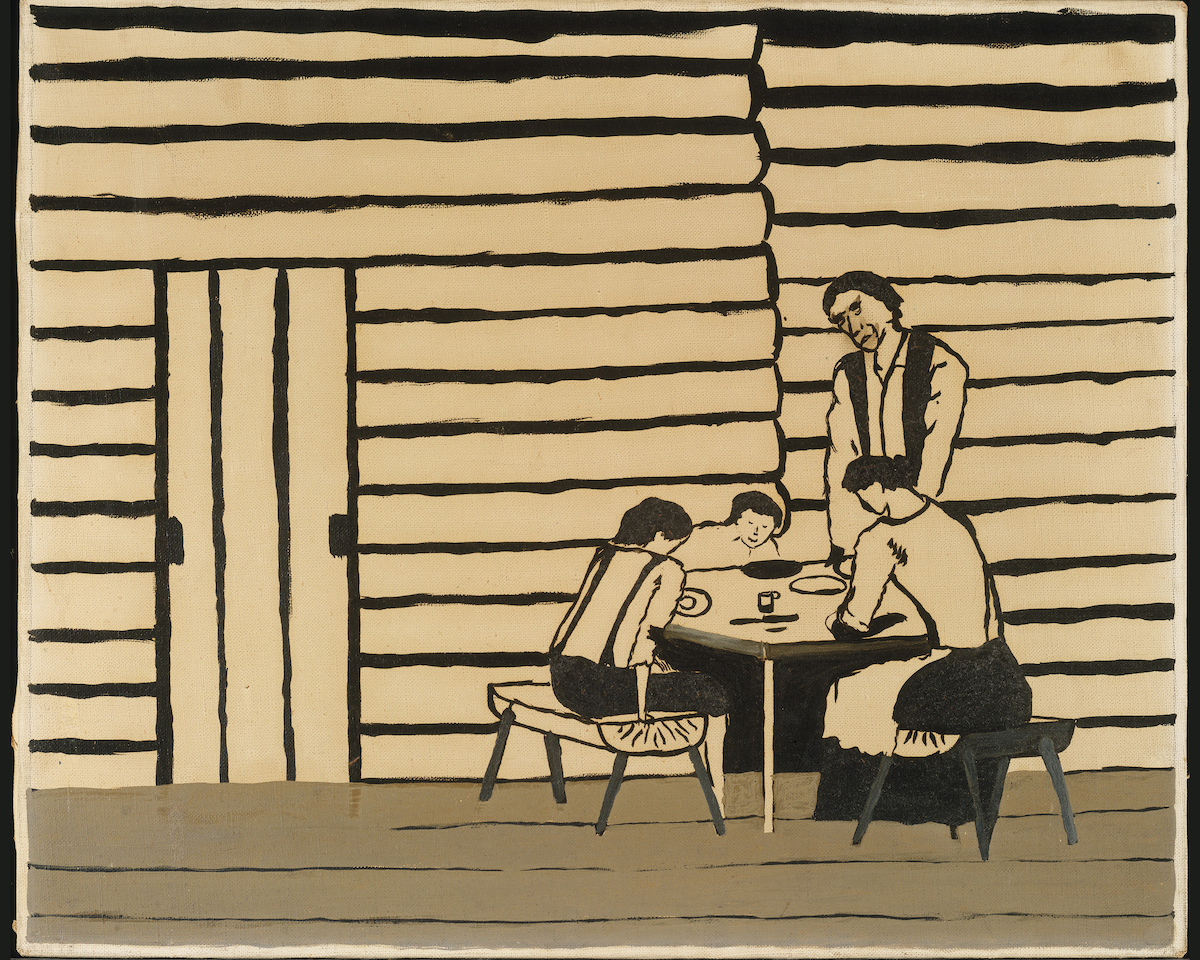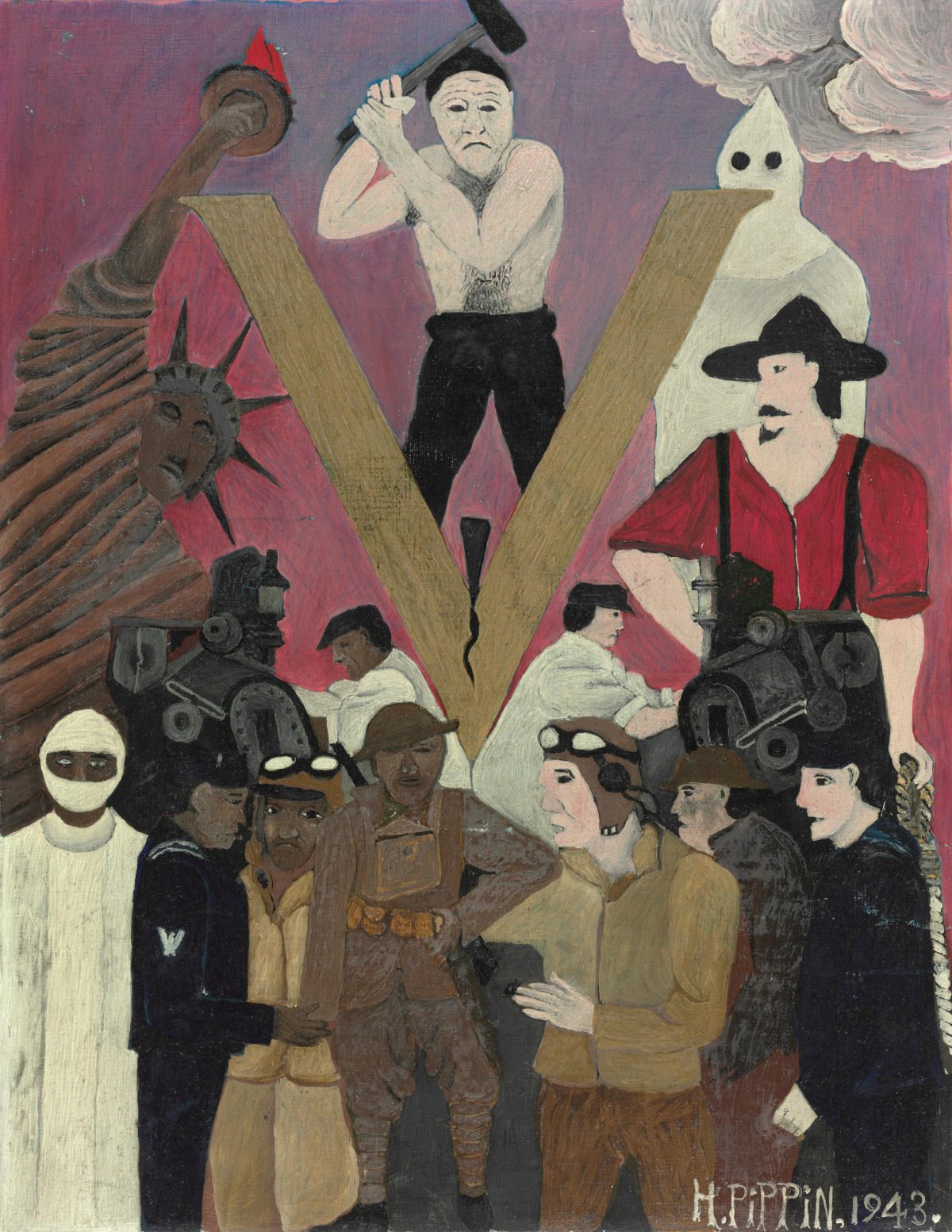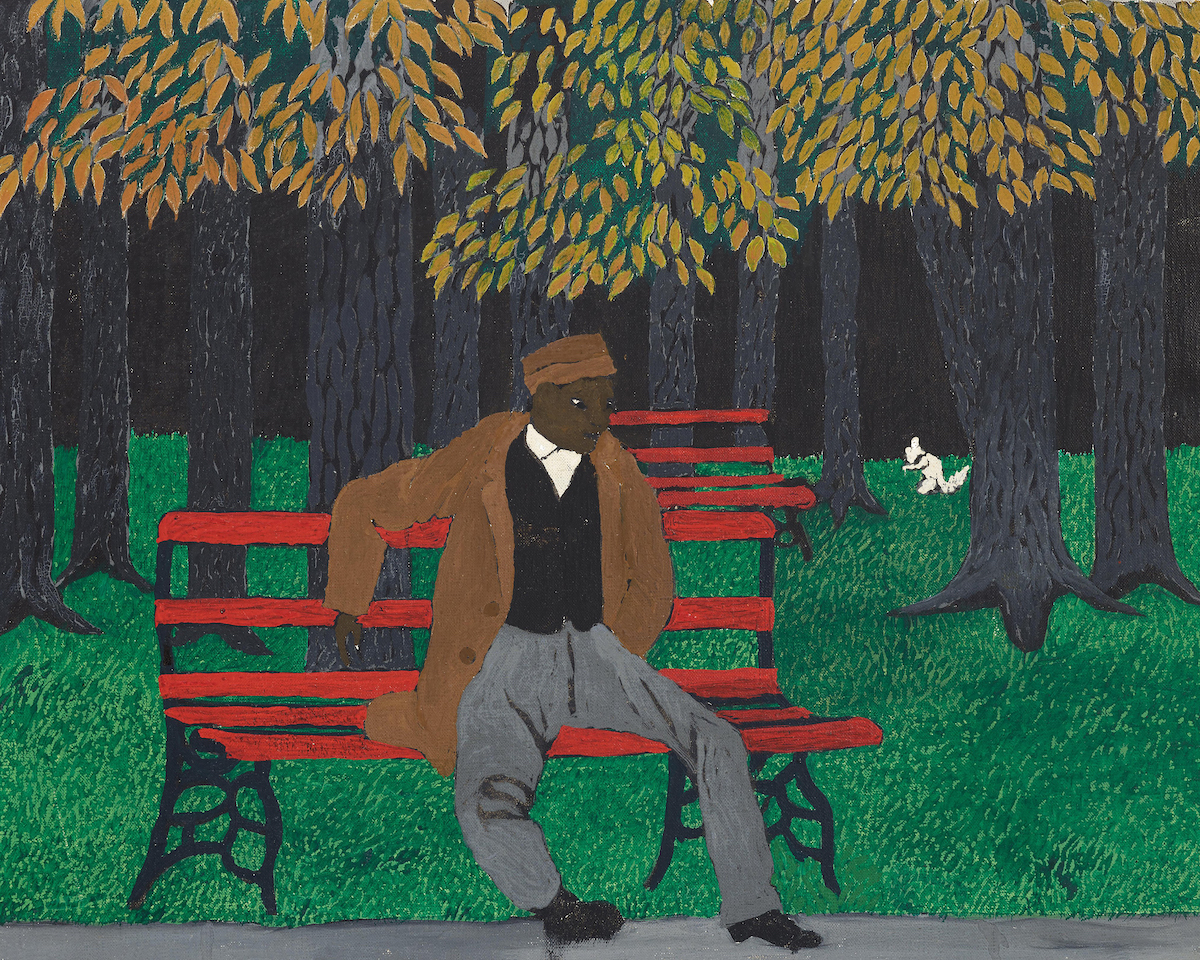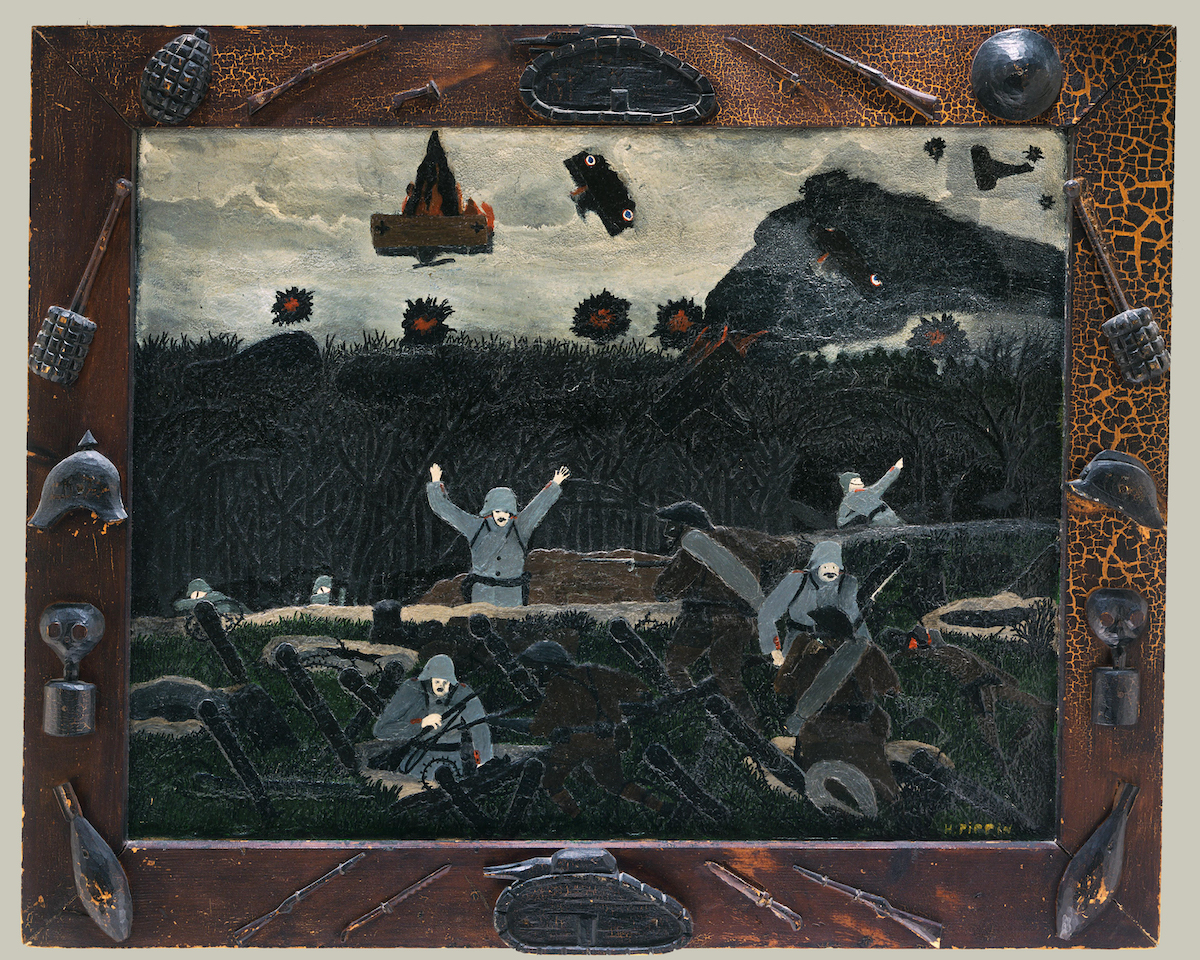“The pictures which I have already painted come to me in my mind, and if to me it is a worth while picture, I paint it” – Horace Pippin
Winston Churchill waved his fingers in a V for Victory and the united British went to war against a common enemy. When the United States joined the war on fascism, they too took up the sign. But for many African Americans there was a double V – one for victory in war and one for victory at home. They were embroiled in two fights: military conflict and racist conflict.
The Double V Campaign was launched by prominent black newspaper, the Pittsburgh Courier, in 1942. The campaign came in response to a letter written to it by James G. Thompson, ‘Should I Sacrifice to Live ‘Half-American’.

The Double V campaign was a slogan championed by The Pittsburgh Courier, then the largest black newspaper in the United States.
And so we see the large V at the centre of Horace Pippin’s painting Mr Prejudice. Painted in 1943, Pippin (1888–1946) shows us an America divided in a time of war, when unity was all important and the State had banned all prejudice in the effort to defeat the Nazis and their allies. The painting is heavy in imaginative symbolism of this great struggle.
Pippin shows us two machinists at the base of the V – one black, one white; each with their backs to the other. The Ku Klux Klan hover beneath a cloud and a large white man holding a noose seems to confront a dark-skinned Statue of Liberty. But the eye is first drawn to a character in the middle, a monstrous, hatchet-faced figure who hammers a wedge into that symbolic V for victory, segregating white and black workers and servicemen.
Pippin himself appears in the image, stood to one side of a black naval office. The artist is wearing a World War I uniform, having served in the war in a segregated troop. His right arm, injured in battle wile fighting for the ‘Harlem Hellfighters’, hangs to his side. In later years, he would use his right arm to guide his left hand to paint. His valour would earn him the Purple Heart. But the fight for equality and liberty would not be won in his lifetime.

The Trial of John Brown, 1942 – buy this print

Family Super, 1943 – buy this print
Horace Pippin
Horace Pippin (February 22, 1888 – July 6, 1946) only took up painting with oils at age 40. hHis work was noticed by the painter N. C. Wyeth and the art critic Christian Brinton in 1937, and within a year his work was on show at the Museum of Modern Art in New York. He was the first black artist to be the subject of a monograph, Selden Rodman’s Horace Pippin, A Negro Painter in America (1947), and the New York Times labelled him the “most important Negro painter” in American history.vHe is buried at Chestnut Grove Cemetery Annex in West Goshen Township, in his home state of Pennsylvania.
Would you like to support Flashbak?
Please consider making a donation to our site. We don't want to rely on ads to bring you the best of visual culture. You can also support us by signing up to our Mailing List. And you can also follow us on Facebook, Instagram and Twitter. For great art and culture delivered to your door, visit our shop.






